Whitman Mission National Historic Site near Walla Walla, Washington preserves the history and hardships that occurred in the 1800s.
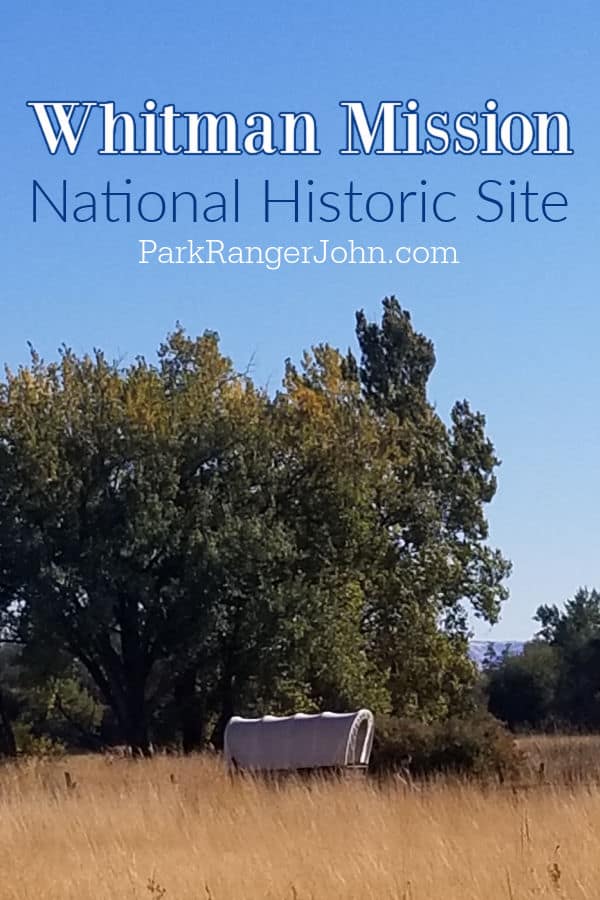
Whitman Mission National Historic Site
History is not always pretty but it is important that we talk about what we can learn today from what happened at this historic site.
We left the park really thinking about how far we have come and how far we have to go as a country.
About Whitman Mission National Historic Site
In 1836, Marcus and Narcissa Whitman left their New York home to travel west to Oregon Country.
They were missionaries who felt called to share their beliefs and convert the Native American tribes to Christianity.
The Whitmans established their mission with the Cayuse tribe near the Walla Walla River. They held services and tried to convert the Cayuse people to their religion and beliefs.
There were continual tensions between the Whitmans and the native tribes that escalated over time.
One factor of this escalation was the growing number of missionaries and homesteaders that were moving west on the Oregon Trail. They brought with them measles and other white person diseases.
Marcus Whitman was a doctor and was able to cure and heal the white travelers but the native people continued to die from these diseases.
The native tribes started to believe that Marcus Whitman was a witch doctor or was trying to harm their tribes.
The measles outbreak led to half the local Cayuse tribe losing their lives. This outbreak led to an attack by the Cayuse on the Whitman Mission.
On November 29, 1847, the Whitman's were killed along with 11 other people at the mission. 60 people were taken captive and held for ransom for a month.
Settlers from the Willamette River Valley in Oregon banded together to avenge Whitman's deaths and on their way to the mission, they burned Indian lodges. The Cayuse retaliated by burning the mission buildings.
In 1848 in response to the killings, Congress passed legislation making Oregon a United States territory.
The hunt for the Cayuse attackers led to a series of Indian skirmishes in the region that ended with the surrender and trial of five Cayuse leaders who were hanged in 1850.
Whitman Mission National Historic Site has outside trails that lead to the original mission site and other structures that were part of the mission.
There are concrete markers to show the size and placement of the buildings.
There is also a monument honoring the Whitman's and the Great Grave where the bodies of the victims are buried.
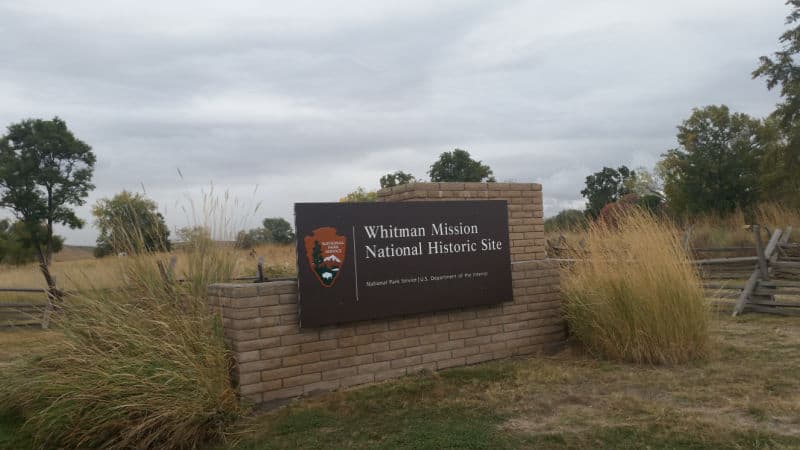
Is Whitman Mission National Historic Site worth visiting?
Yes, The park provides the opportunity to learn about a dark part of US History that isn't talked about often.
History of Whitman Mission National Historic Site
Whitman Mission National Historic Site is located just west of Walla Walla, Washington, not far from the Washington-Oregon border. It is located on the site of the former Whitman Mission of Waiilatpu.
Before settlers entered the Walla Walla Valley, the area of Waiilatpu was home to the Cayuse natives for centuries.
Another tribe native to Washington and Oregon, the Nez Perce, gave the name Waiilatpu to the Cayuse people as the word meant “people who sway like grass when they dance,” in reference to the tall rye grass in the area.
The first of the Northwest Native Americans to acquire horses, the Cayuse were a powerful people and known to have great warriors.
The Cayuse fished and traded and like other tribes in the area, traveled with the seasons following the food sources that were available; arriving in the mountains in the fall to hunt, near rivers in the spring for salmon, and various locations in the summer to seek berries and roots.
The Cayuse were intertwined with other tribes in the area, such as the Nez Perce and Umatilla. These tribes were separate but worked together to hunt, trade, and protect each other.
The Cayuse were among the first Northwest natives to encounter the white man. As the Lewis and Clarke Expedition traveled through the area, the Cayuse were curious about the explorers.
The Cayuse believed that white men had special powers leading to success. They believed they were gifted with an ability to create better weapons and tools and the Cayuse were amazed at the supplies they carried and the weapons they possessed.
For the most part, the Cayuse and white traders passing through the area lived peacefully.
The Cayuse were open to trapping beaver for the white man and the white man agreed to never trade or give weapons to anyone but allies to the Cayuse and Nez Perce tribes.
Because the Cayuse believed that the white man possessed special powers, they were somewhat receptive to learning more about their beliefs when the first Christian missionaries began arriving in the 1830s.
Christian traders and missionaries encouraged the natives to join them at their worship ceremonies and even incorporated their native chants into their prayers.
Traders and missionaries continued to arrive and the Cayuse were by all accounts very welcoming.
In 1835, Reverend Samuel Parker from Boston arrived in the area and conveyed to the Cayuse that he intended to build a mission.
He assured the Cayuse that he did not intend to take their land and that each year a ship of supplies would arrive and the items would be shared with the natives as payment for building the mission on their land.
Associated with Parker was a missionary doctor named Marcus Whitman from New York. He agreed to move to Oregon with his wife Narcissa.
A year after the Whitmans arrived and built their mission at Waiilatpu, they had a daughter which they named Alice.
The Cayuse were friendly when the Whitmans arrived, but they became very close after the birth of Alice.
The natives considered her to be Cayuse as she was born on their land. When Alice was two, she drowned after wandering down to the river behind the mission.
It was after her death that the relationship between the Whitmans and the Cayuse began to deteriorate.
In the years that followed, the tension between the missionaries and Cayuse rose. Missionaries felt the natives needed to be “civilized” before they could practice white religion.
They attempted to change all aspects of the natives’ lifestyles – wanting them to farm instead of eating wild game and berries, criticizing their spiritual beliefs, and only allowing them near the mission if they dressed in clothes more accustomed to white culture.
It also came to fruition that the white people had not been following through on their previous promise to compensate the natives for the use of their land.
By 1843 it was clear that the Whitman’s mission was a growing success and Marcus encouraged emigrants to stop at their location on their way west.
This seemed to be the final straw for the natives who had tolerated and even welcomed the white settlers thus far.
In 1847, more than 4,000 settlers arrived at Waiilatpu. It was not long before outbreaks of new diseases swept through the area; nearly half the Cayuse tribe died as they had no resistance these diseases like many of the white settlers did.
The Cayuse believed they were being poisoned when they noticed that Dr. Whitman’s medicine was helping to heal the white people but not the Cayuse.
On November 29, 1847, Chief Tiloukaikt led a group of Cayuse to destroy most of the buildings at Waiilatpu.
Of the 70 individuals at the mission at the time, Marcus, Eliza, and nine others were massacred. A few survivors escaped the area, but 50 people, mainly women and children, were taken hostage.
A few months later, at the beginning of 1848, the hostages were ransomed by Peter Skene Ogden of the Hudson Bay Company.
Ogden had successfully traded with the Cayuse and other native tribes and was able to negotiate the release of the captives.
These cause and effect events and continued tensions between the Cayuse and settlers, initiated the Cayuse War which was fought between 1847 and 1855.
In March of 1855, the hanging of five Cayuse men was the first capital punishment in the territory.
The attack in 1847 sent shock wave throughout the country and temporarily stopped missionaries from traveling west to live among the Native Americans. It also prompted Congress to declare Oregon a U.S. Territory.
In 1897, on the 50th anniversary of the murders, a 27-foot monument was build overlooking the Walla Walla Valley. The site is also the burial location of Marcus and Eliza Whitman.
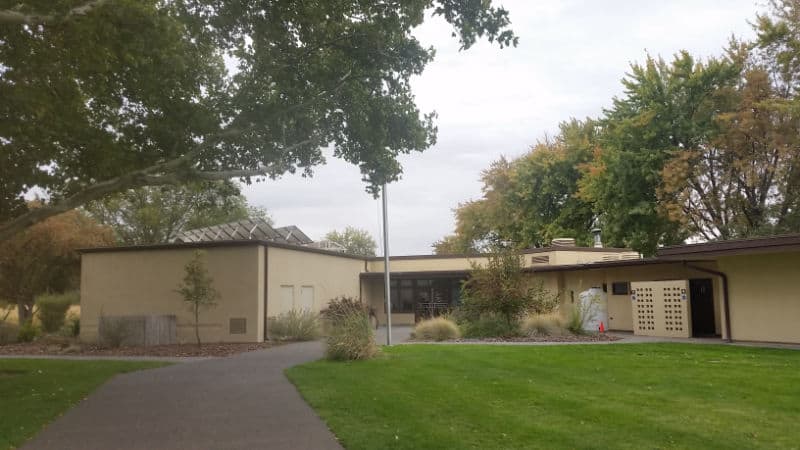
Things to know before your visit to Whitman Mission National Historic Site
Entrance fee
$0.00 - There is no entrance fee to visit the park.
Learn more about National Park Passes for parks that have an entrance fee.
$80.00 - For the America the Beautiful/National Park Pass. The pass covers entrance fees to all US National Park Sites and over 2,000 Federal Recreation Fee Sites for an entire year and covers everyone in the car for per-vehicle sites and up to 4 adults for per-person sites.

Buy your pass at this link, and REI will donate 10% of pass proceeds to the National Forest Foundation, National Park Foundation, and the U.S. Endowment for Forestry & Communities.
National Park Free Entrance Days -Mark your calendars with the five free entrance days the National Park Service offers annually.
Time Zone
Pacific Time Zone
Pets
Pets are allowed on the park grounds as long as they are on a leash. Pets are not allowed in the visitor center.
Cell Service
Cell service will depend on your carrier. We had it randomly while walking the park grounds.
Park Hours
Park grounds and trails are open daily from sunrise to sunset.
Visitor Center hours are seasonally with the center normally open at least from 9 am to 4 pm except on Sundays and Mondays.
Wi-Fi
There is no Wi-Fi available in the park.
Insect Repellent
Insect repellent is always a great idea when outdoors, especially if you are around any body of water.
We use Permethrin Spray on our clothes before our park trips.
Water Bottle
Make sure to bring your own water bottle and plenty of water with you. Plastic water bottles are not sold in the park.
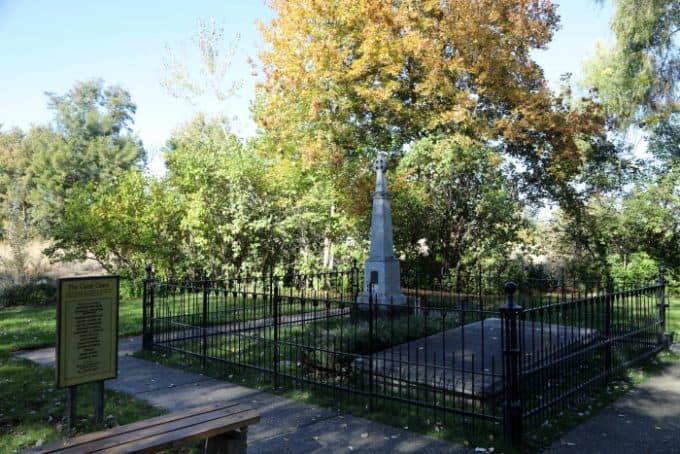
Parking
There is ample parking in front of the visitor center and a small picnic area.
Food/Restaurants
There are no restaurants within the park. There are tons of great Walla Walla Restaurants just down the road.
Gas
There are no gas stations within the park.
Drones
Drones are not permitted within National Park Sites.
National Park Passport Stamps
National Park Passport stamps can be found in the visitor center.
Whitman Mission NHS is part of the 2005 Passport Stamp Set.
We like to use these circle stickers for park stamps so we don't have to bring our passport book with us on every trip.
The National Park Passport Book program is a great way to document all of the parks you have visitied.
You can get Passport Stickers and Annual Stamp Sets to help enhance your Passport Book.
Electric Vehicle Charging
There are EV Charging Stations available in Walla Walla just down from the park.
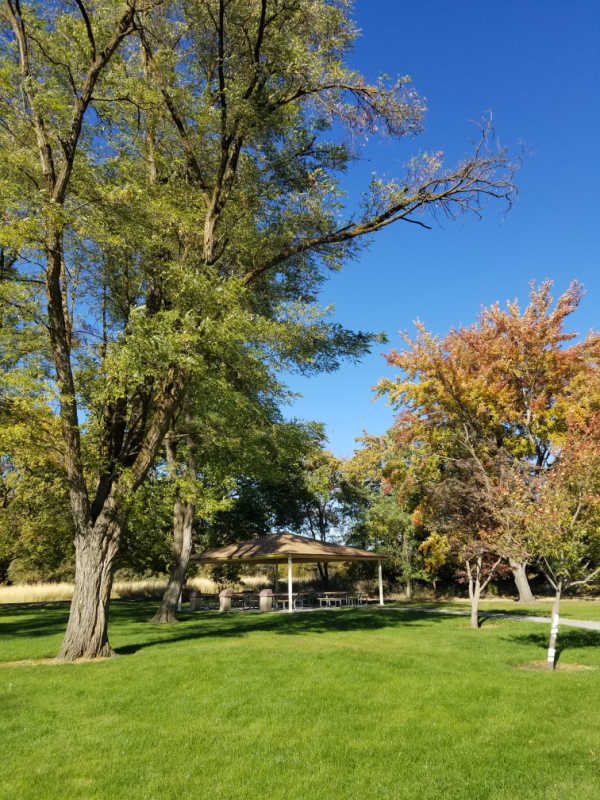
Details about Whitman Mission National Historic Site
Size - 139 acres
Check out how the park compares to other National Parks by Size.
Date Established
1936 - Established as Whitman National Monument
January 1, 11963 - Re-designated as Whitman Mission National Historic Site.
Visitation
In 2021, Whitman Mission NHS had 43,921 park visitors.
In 2020, Whitman Mission NHS had 34,933 park visitors.
In 2019, Whitman Mission NHS had 48,481 park visitors.
Learn more about the most visited and least visited National Parks in the US
National Park Address
Whitman Mission National Historic Site
328 Whitman Mission Road
Walla Walla, WA 99362
National Park Map
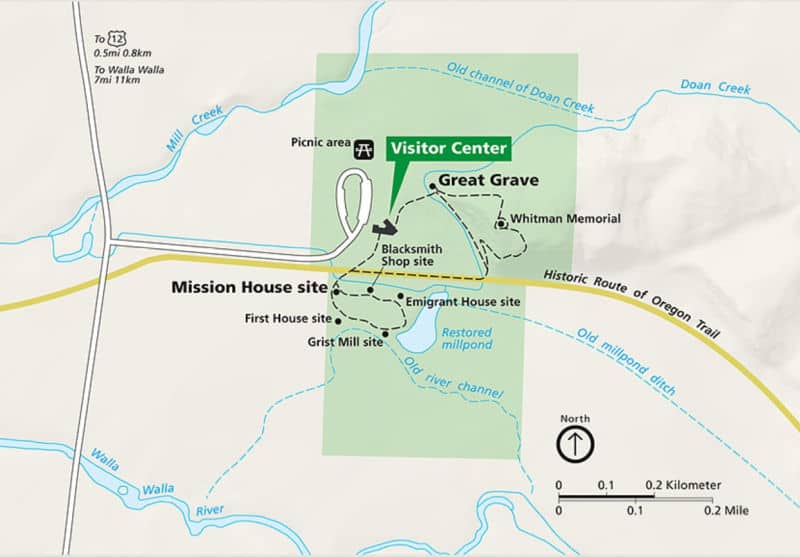
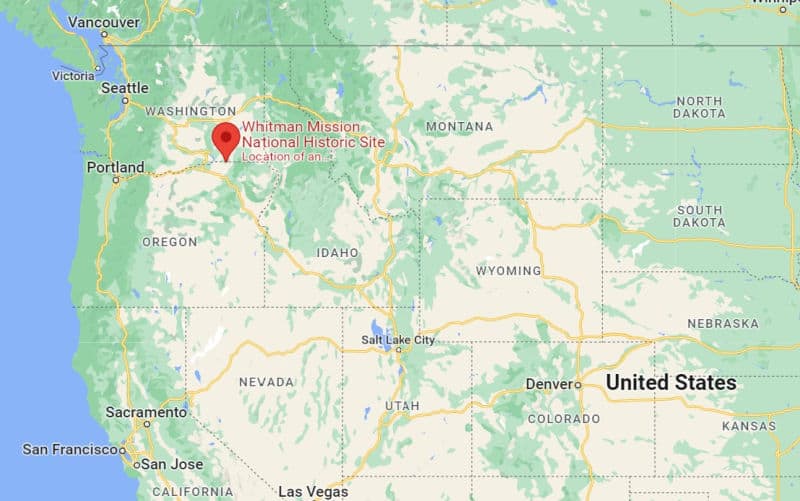
Where is Whitman Mission National Historic Site?
Whitman Mission NHS is located in south eastern Washington near Walla Walla.
Estimated distance from major cities nearby
- Walla Walla, WA - 8.4 miles
- Kennewick, WA - 42 miles
- Spokane, WA - 173 miles
- Yakima, WA - 124 miles
- Seattle, WA - 254 miles
- Portland, OR - 236 miles
- Boise, ID - 255 miles
Estimated Distance from nearby National Park
Mount Rainier National Park - 223 miles
Olympic National Park - 345 miles
North Cascades National Park - 364 miles
Crater Lake National Park - 409 miles
Glacier National Park - 445 miles
Where is the National Park Visitor Center?
The Whitman Mission NHS Visitor Center is located next to the main parking lot.
You have to walk through the visitor center to see the rest of the park.
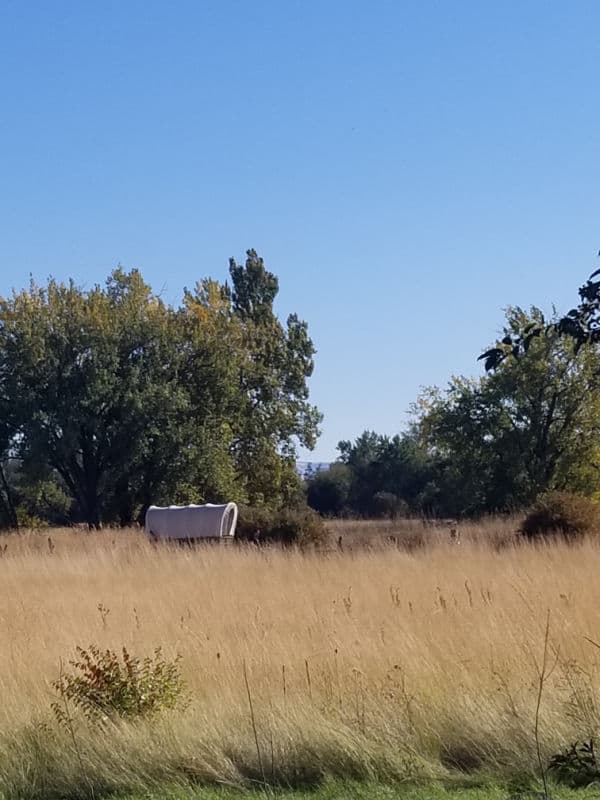
Getting to Whitman Mission National Historic Site
Closest Airports
Walla Walla Regional Airport (ALW)
International Airports
Seattle-Tacoma International Airport (SEA)
Portland International Airport (PDX)
Spokane International Airport (GEG)
Regional Airports
Tri-Cities Airport (PSC)
Driving Directions
From Walla Walla:
- Take So. 2nd Street to US-12W
- Merge onto US-12W via the ramp on the left
- Drive 5.89 miles to the Whitman Mission NHS sign
- Turn left onto Spalding Road for .19 mile then right on Old Highway 12 for 0.8 mile
- Go left on Swegle Road for 0.5 mile
- Turn left on Whitman Mission Road
- Road ends in circular parking area in front of the Visitor Center
From Tri Cities/Pasco, WA:
- From I-182E, merge onto US-12E
- Travel 45.57 miles
- Turn right onto Old Highway 12 and travel 2.35 miles
- Turn right on Swegle Road and proceed .51 miles
- Turn left onto Whitman Mission Road
- Road ends in circular parking area in front of the Visitor Center
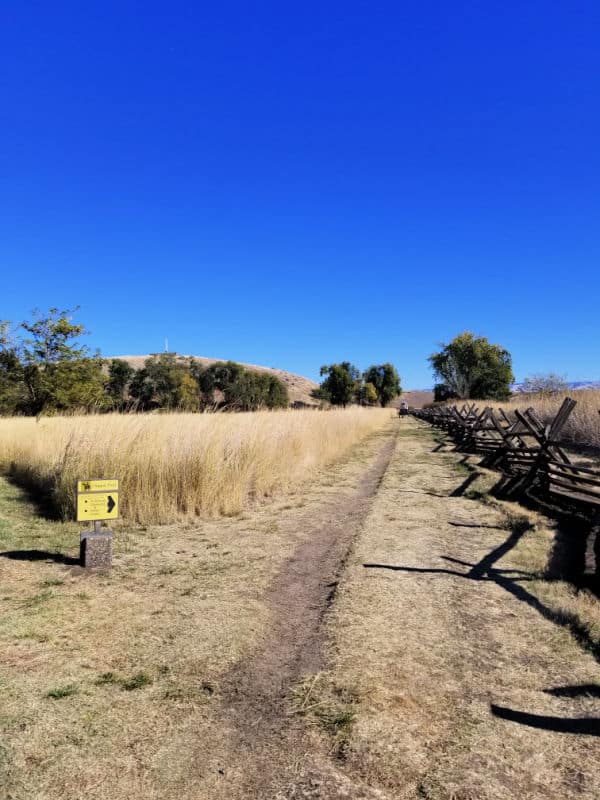
Best time to visit Whitman Mission National Historic Site
The best time to visit is really any time of the year you can get to Walla Walla. While it may be cold and a bit snowy in the winter the weather rarely gets horrible.
Weather and Seasons
The Walla Walla area experiences hot dry summers and cold winters.
The hottest temperatures are from June 19th to September 10th with an average daily high above 82 degrees.
The coldest temperatures are from November 15th to February 22nd with an average daily temperature below 50 degrees.
Rain occurs year round with November getting the most rain. Snow occurs on average between November 22 to February 19th with an average of an inch of snow a month.
December gets the most snow with an average of 2.7 inches.
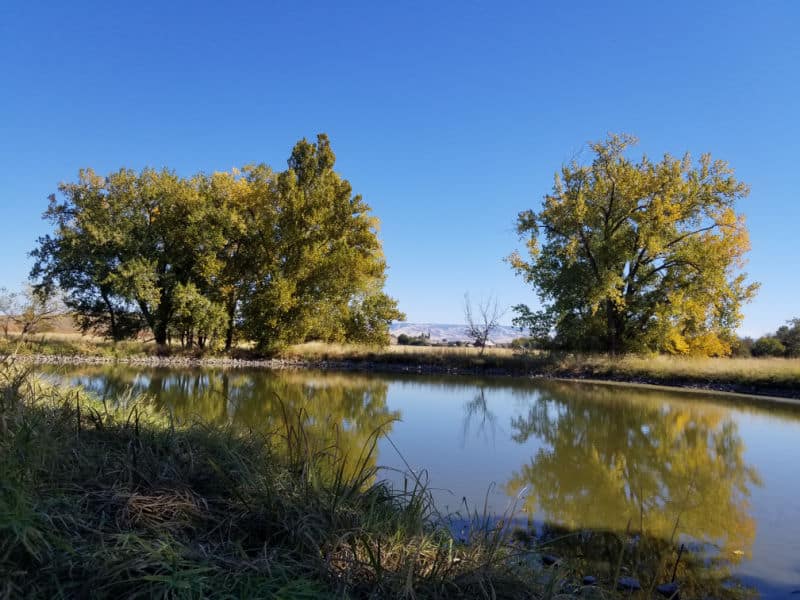
Best Things to do in Whitman Mission National Historic Site
Plan to spent a couple of hours exploring the park.
Visitor Center
The visitor center has a small museum with exhibits including Native American items, archaeological artifacts, and personal belongings of the Whitman's.
There is a small store with books about the site. Bathrooms are located outside the visitor center.
A Prophecy Fulfilled Park Movie
The park movie really helps tell the story of what happened at the Whitman Mission. The park recently updated its movie and it is well worth watching.
One thing we learned during the video is the Whitman's traveled across the country with the Spalding's who set up a mission that can be seen at the Nez Perce National Historical Park.
Junior Ranger Program
The Junior Ranger Program can be filled out while visiting the visitor center. Most of the answers are found within the movie and the museum.
Plan 20 to 30 minutes depending on the age of the participant to complete the program.
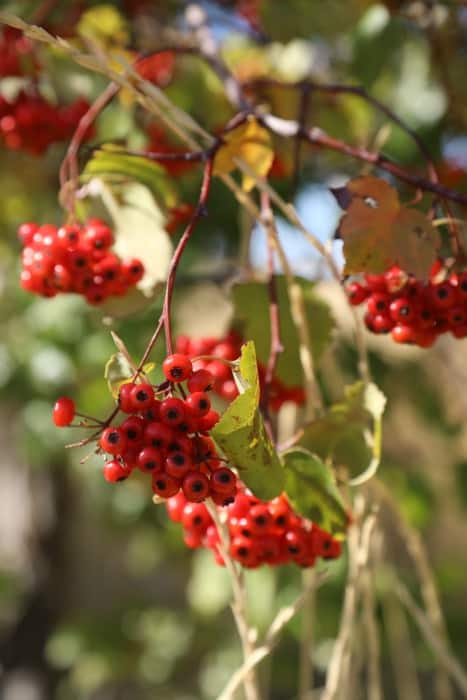
Walk the Grounds
There is a mile of trails that lead around the Whitman Mission, up to the memorial, and along the Oregon Trail. The trails are paved and easily walk-able.
The trail around the mission is relatively flat. There is a hill to get up to the memorial.
Picnic
There is a fantastic covered picnic shelter near the parking area. The picnic area has charcoal grills available.
Ranger Programs
During the summer the park offers Park Ranger led programs.
These programs include a walking tour of the mission grounds.
Tipi programs are offered during the summer and fall. Rangers explain the use of tipi's as homes for teh Cayuse and other Columbia Plateau Indians. Visitors have the opportunity to raise a plateau tipi including raising poles, attaching the canvas and staking down the tipi.
Ranger on the Hill program offers visitors the opportunity to learn about the aftermath of the attack on the Cayuse, the creation of the park and more.
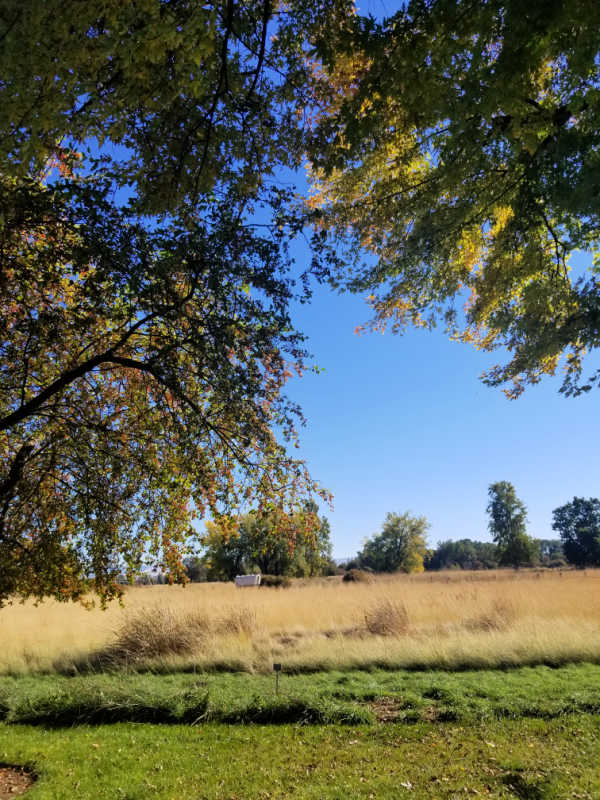
Hiking in Whitman Mission National Historic Site
Always carry the 10 essentials for outdoor survival when exploring.
Mission Grounds Loop
Distance - .5 mile loop
The Mission Grounds Loop has great interpretive panels explaining what occurred at each site within the park including the historic mission buildings, restored mill pond, restored apple orchard, and more.
Visitors can walk to the top of the hill to see the Whitman Monument and views of the surrounding area. The trail to the top of the hill is very steep.
At the base of the hill visitors will see the burial site.
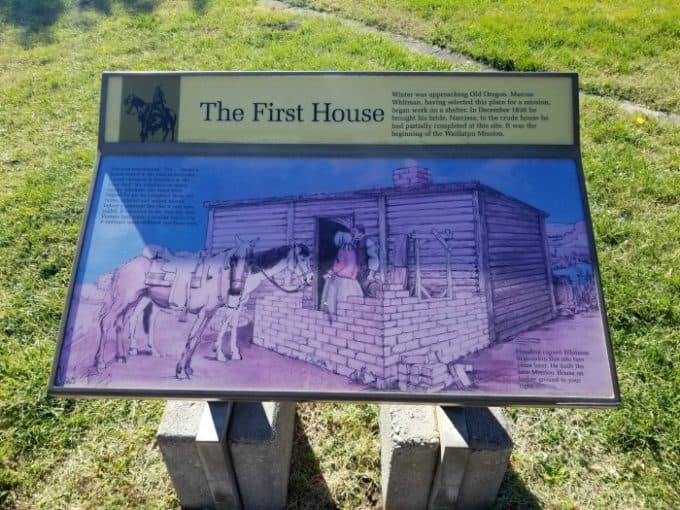
How to beat the crowds in Whitman Mission National Historic Site?
We have not encountered many crowds while visiting the park. We do suggest visiting mid-week if you want to beat the busiest days.
Where to stay when visiting Whitman Mission National Historic Site
There are no National Park Lodges within the park.
There is lodging available in Walla Walla, Washington including quite a few vacation rentals and hotels.
The Marcus Whitman Hotel - A free roundtrip airport shuttle, a terrace, and a garden are just a few of the amenities provided at The Marcus Whitman Hotel and Conference Center. Be sure to enjoy a meal at The Marc Restaurant, the onsite restaurant. In addition to dry cleaning/laundry services and a bar, guests can connect to free in-room Wi-Fi.
Courtyard by Marriott Walla Walla - A free roundtrip airport shuttle, a grocery/convenience store, and a coffee shop/café are just a few of the amenities provided at Courtyard by Marriott Walla Walla. For some rest and relaxation, visit the hot tub. The onsite restaurant, The Bistro, features American cuisine and light fare. Free in-room Wi-Fi is available to all guests, along with dry cleaning/laundry services and a bar.
Holiday Inn Express Walla Walla - At Holiday Inn Express Walla Walla, an IHG Hotel, you can look forward to a free breakfast buffet, dry cleaning/laundry services, and a gym. For some rest and relaxation, visit the hot tub. Stay connected with free in-room Wi-Fi, and guests can find other amenities such as a business center and a snack bar/deli.
Comfort Inn And Suites Walla Walla - A free breakfast buffet, a grocery/convenience store, and a terrace are just a few of the amenities provided at Comfort Inn And Suites Walla Walla. For some rest and relaxation, visit the hot tub. Enjoy the gym, as well as activities like hiking/biking. In addition to a firepit and laundry facilities, guests can connect to free in-room Wi-Fi.
La Quinta Inn & Suites by Wyndham Walla Walla - At La Quinta Inn & Suites by Wyndham Walla Walla, you can look forward to free to-go breakfast, laundry facilities, and a fireplace in the lobby. For some rest and relaxation, visit the hot tub. In addition to a gym and a 24-hour business center, guests can connect to free in-room Wi-Fi.
Click on the map below to see current rates for hotels and vacation rentals near the park.
Camping
There are no National Park Campgrounds within the park.

For a fun adventure check out Escape Campervans. These campervans have built in beds, kitchen area with refrigerators, and more. You can have them fully set up with kitchen supplies, bedding, and other fun extras. They are painted with epic designs you can't miss!
Escape Campervans has offices in Vancouver, Seattle, Portland, San Francisco, Las Vegas, Los Angeles, Phoenix, Salt Lake City, Denver, New York, and Orlando
Additional Resources
Unsettled Ground: The Whitman Massacre and Its Shifting Legacy in the American West
The Story of Marcus Whitman; Early Protestant Missions in the Northwest
The Letters of Narcissa Whitman
A Survivor's Recollections of the Whitman Massacre
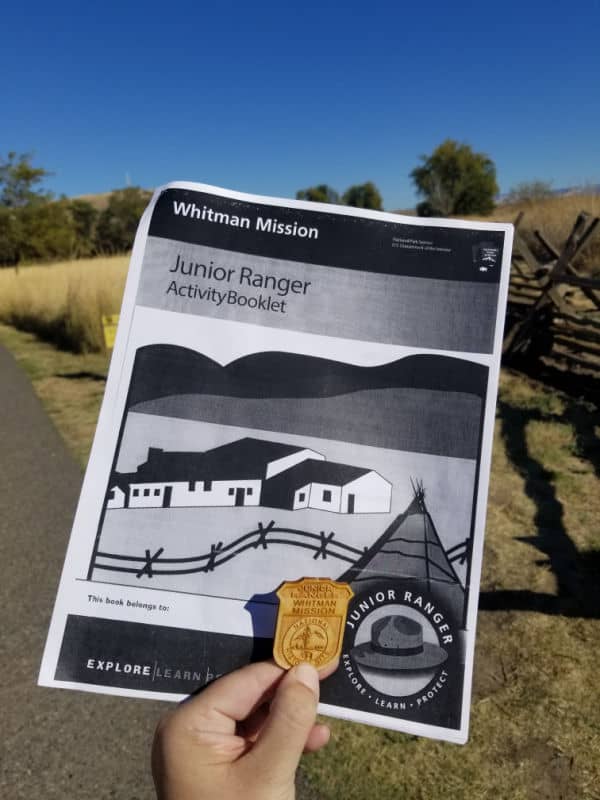
Parks Near Whitman Mission National Historic Site
Manhattan Project National Historic Site (Hanford) - 56 miles
Nez Perce National Historical Park - 117 miles
John Day Fossil Beds National Monument - 170 miles
Fort Vancouver National Historic Site - 238 miles
Lewis and Clark National Historical Park - 329 miles
Oregon Trail National Historic Trail
Check out all of the Washington National Parks along with neighboring Oregon National Parks, Idaho National Parks, National Parks in Hawaii, and National Parks in Alaska
Make sure to follow Park Ranger John on Facebook, Instagram, Pinterest, and TikTok





Leave a Reply